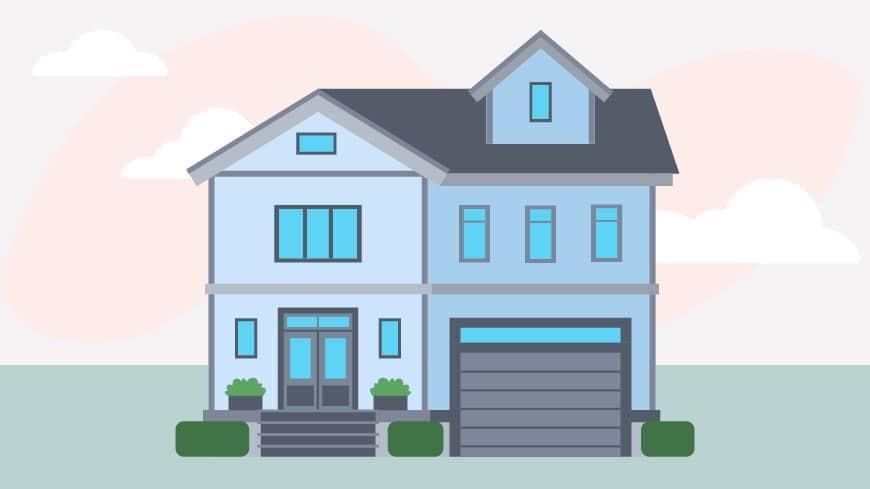What is a conforming loan? A non-conforming loan?

There's no shortage of definitions and terminology you need to learn when buying a house. You might have noticed rates for 30-year conforming loans and wondered if that meant there must be non-conforming loans. There are! What is a conforming loan? What's a non-conforming loan? What are the differences when comparing conforming loans vs. non-conforming loans?
All great questions. In this article, we’ll break down everything you need to know about both these broad loan types.
What does conforming mean for mortgages?
To understand conforming loans, we should first step back and give a very brief refresher on how mortgages work — in particular, how mortgage companies make money. Fair warning: The acronyms are going to fly fast and furious here, so try to keep up.
Lenders often bundle multiple mortgages together as mortgage-backed securities (MBS) and then sell them on the secondary market to investors. The proceeds from those transactions can then be used to fund even more home loans. Everybody wins!
Sometimes, the buyers in these transactions aren’t investment firms at all, but the government-sponsored entities (GSE), Fannie Mae and Freddie Mac. In fact, Fannie and Freddie are responsible for a good chunk of MBS purchase activity. But a GSE can’t buy just any mortgage — they’ll only buy home loans that fit certain requirements. The most important criteria? The loan amount.
The Federal Housing Finance Agency (FHFA) sets loan limits each year, which Fannie and Freddie then need to follow. Why put restrictions on loan amounts? As with just about everything else in the mortgage industry, it has a lot to do with minimizing risk. Loan limits are tied to local housing prices, so a GSE can’t buy a home loan that’s significantly higher than other properties on the market. That protects GSEs, lenders and borrowers from risky mortgages.
To go back to the original question, conforming in this case refers to those FHFA standards. Loans that meet — or conform to — those requirements qualify as conforming loans. Everything else is considered a non-conforming loan.
What is a conforming loan?
Now that we know what “conforming” means in the context of mortgage lending, we can take a closer look at conforming loans.
Conforming loan definition
A conforming loan is a mortgage that adheres to FHFA standards regarding loan amounts and underwriting. Both Fannie Mae and Freddie Mac must follow these guidelines when purchasing mortgages and are restricted from guaranteeing any home loan that does not align with FHFA guidelines.
For a home loan to meet these qualifications, its loan amount must be lower than the current conforming loan limits. The FHFA updates conforming loan limits every year, so this figure changes on a regular basis.
Another wrinkle to consider is that the FHFA sets loan limits according to home prices, and those can vary significantly across different housing markets. As such, the FHFA often establishes higher limits in high-cost areas like San Francisco, Seattle and New York.
As a general rule, loan limits follow rules set by the Housing and Economic Recovery Act (HERA). The HERA formula sets the local loan limit at 115% of the median home value, which is why hotter real estate markets tend to have higher conforming loan limits. The FHFA's most recent update increased general loan limits above their 2023 figures. For most counties in the U.S., 2024 conforming loan limits on one-unit properties are now $766,550.* The 2024 conforming loan limits are higher for multi-unit properties and homes located in high-cost areas.
Are conforming loans & conventional loans the same?
Conforming loans are often erroneously conflated with conventional loans, but these two financing options are actually quite different. A conventional home loan is any mortgage that is not supported by a government agency.
Common examples of conventional loans include fixed rate mortgages and adjustable rate mortgages (ARMs) provided by a mortgage company. They don’t need to involve Fannie or Freddie at all, although they certainly could. But the two are most definitely not the same thing.
What is a non-conforming loan?
Given what we now know about conforming loans, the definition of a non-conforming loan is pretty straightforward:
Non-conforming loan definition
A non-conforming loan is a mortgage that doesn’t meet FHFA rules. In particular, these home loans exceed conforming loan limits. You’ll likely see these mortgages referred to as “jumbo loans” due to their high loan amounts.
Non-conforming loans may be your only financing option if you’re trying to buy a home with a listing price well above other properties in your area. That doesn’t mean the home is overpriced, though; usually, borrowers use jumbo mortgages to buy large or expensive houses.
Taking on a jumbo loan involves a very different mortgage process compared with a conforming loan. Remember, the purpose of conforming loan limits is to minimize risk — in particular, the risk of defaulting on the mortgage. Because jumbo loans exceed those loan amount thresholds and cannot be backed by any GSE, lenders tend to view them as riskier investments.
As such, expect to face more stringent underwriting requirements when applying for a non-conforming loan. You may need to show higher credit scores, a larger down payment, extremely robust income streams and a lower debt-to-income (DTI) ratio to qualify for a jumbo mortgage.
There’s a common misconception that non-conforming loans carry higher interest rates than conforming loans. Given the increased perceived risk, it would make sense for lenders to set higher rates on these types of loans. While this has been true in the past, it’s not really the case any longer. Now, your lender could insist on a higher mortgage rate for a jumbo loan, but it’s no longer a standard operating procedure.

Conforming loans vs. non-conforming loans
We’ve established the fundamental difference between these two types of loans, but they vary in many key ways, from qualification requirements to acceptable loan amounts.
Conforming loan | Non-conforming loan |
Meets FHFA guidelines | Does not meet FHFA guidelines |
Loan amount below current loan limits ($766,550 for most counties in 2024)* | Loan amount above current loan limits ($766,550 for most counties in 2024)* |
May qualify if credit history meets program standards | May need a credit score higher than 700 for jumbo loans |
Flexible down payment options (may need to pay private mortgage insurance) | May require down payment options at or above 20% of the purchase price for jumbo loans |
May qualify with a DTI as high as 50% | May need a DTI lower than 40% |
Choosing between conforming loans & non-conforming loans
Think of a conforming loan as your default financing option. Assuming you don’t require a larger-than-normal home loan or a government home loan such as an FHA loan, that’s the type of financing you’ll likely be offered. If you want the most straightforward mortgage experience with a streamlined underwriting and financial review process, then conforming loans are the way to go.
That being said, non-conforming loans are absolutely necessary when you want to purchase a house using a home loan that exceeds current limits. There’s really no other way around it. In fact, there isn’t much of a choice for you to make between conforming and non-conforming loans because the decision will be made for you.
In conclusion
Many mortgages fall into one of two categories: conforming loans and non-conforming loans (also known as jumbo loans). A conforming loan meets either Freddy or Fannie’s underwriting and loan limit guidelines while non-conforming loans do not. In most cases, lenders will be able to offer you a conforming loan. Jumbo loans come into play when you need a much larger mortgage to finance an expensive home purchase or are looking to buy in a red-hot real estate market where a larger loan amount is necessary.
Truthfully, many — if not most — borrowers will go through the entire mortgage process without ever knowing the difference between these two types of home loans. But understanding the differences between conforming and non-conforming loans is good to know so you can approach the mortgage process as an educated homebuyer.
*Does not include high balance counties where loan limits may be higher than listed here




